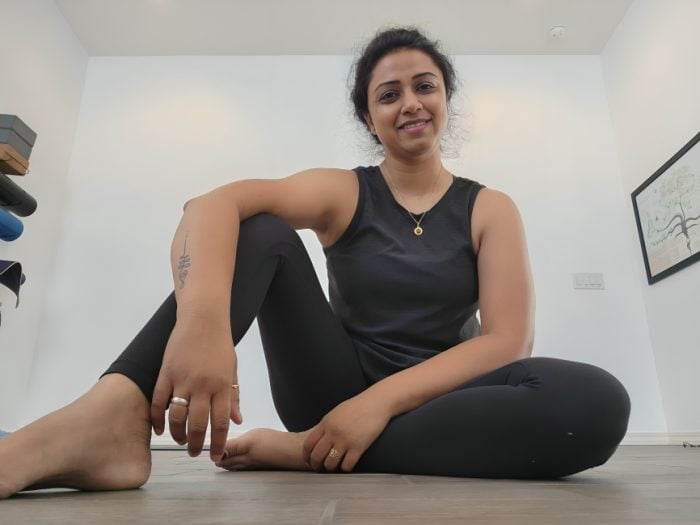{*Did you know you can write on Elephant? Here’s how—big changes: How to Write & Make Money or at least Be of Benefit on Elephant. ~ Waylon}
~
*Editor’s Note: Elephant is not your doctor or hospital. Our lawyers would say “this web site is not designed to, and should not be construed to provide medical advice, professional diagnosis, opinion, or treatment to you or any other individual, and is not intended as a substitute for medical or professional care and treatment. Always consult a health professional before trying out new home therapies or changing your diet.” But we can’t afford lawyers, and you knew all that. ~ Ed
~
Yoga teaches us to embrace life as it unfolds, but recovering from a partial hysterectomy brought lessons I hadn’t anticipated.
Women’s health issues, particularly those involving reproductive health, are often under-discussed, even though they profoundly shape us.
Sharing my journey has become a way to process my experience and offer support to others on a similar path.
My laparoscopic partial hysterectomy became necessary after months of severe bleeding. Even with an IUD (Intrauterine device), the bleeding persisted. After removing the device, the problem continued, prompting my doctor to suggest an Endometrial Ablation to remove the uterine lining. While the ablation brought temporary relief, the bleeding resumed after two months, leaving surgery as the next option. Though I hesitated, I knew it was the right decision.
Hysterectomies are common—nearly one in three women undergo one by the age of 60. Yet, the physical and emotional toll of these procedures often remains unspoken. My surgery removed the uterus and fallopian tubes while leaving my ovaries intact, reducing the risk of early menopause. I prepared for the standard six-week recovery period, but anxiety lingered. Having had two c-sections, I knew that surgical complications, such as an accidental nick to the bladder, could make recovery more difficult. Fortunately, that didn’t happen, but the possibility weighed heavily on me.
Another source of anxiety was how recovery would impact my yoga practice. I have spent years cultivating upper body strength, core stability, and flexibility, and the thought of pausing my asana practice for six weeks worried me. At my age, I feared that regaining progress would take even longer, making it feel like I was starting from scratch.
After the surgery, I experienced discomfort at the incision sites and soreness from internal stitches. Unexpectedly, I also felt a deep ache in my shoulders and collarbone due to trapped air—an unpleasant side effect of laparoscopic surgery. Hormonal fluctuations only added to the challenge, stirring emotional ups and downs I hadn’t anticipated.
To my surprise, I managed the pain without medication, one full day after the surgery, relying on yogic practices. Abdominal breathing became an essential tool, helping me navigate discomfort in my lower body. I began by gently expanding my belly with each inhale, visualizing the breath reaching the areas that needed healing. As my breathing deepened over time, it became a source of physical and emotional support. For the air-induced pain in my shoulders, I turned to clavicular breathing, focusing on expanding my upper chest while consciously relaxing my shoulders. These breathing techniques, along with relaxation practices and warm, Ayurvedic-inspired meals, eased much of my discomfort.
Even though I felt surprisingly well two days after surgery, my doctor was adamant: no physical movement. It was a humbling reminder that feeling good did not mean I was fully healed. Rest was crucial for long-term recovery. During this period, I found solace in pranayama, specifically Bhramari (humming breath) and Nadi Shuddhi (alternate nostril breathing), which helped me stay grounded and calm. I also turned to guided meditations and visualization techniques, such as IRT (Instant Relaxation Technique) and DRT (Deep Relaxation Technique), which allowed me to stay connected with my body without physical exertion. Daily body scanning further enhanced my awareness and acceptance of my state, helping me remain patient with the recovery process.
While physical healing progressed, the mental challenges persisted. As someone dedicated to yoga, I feared losing the strength and flexibility I had built over time. Yet, this fear nudged me toward deeper reflection. Yoga, I realized, isn’t just about movement—it’s about acceptance. It’s about meeting myself exactly where I am and embracing each moment, free of judgment. Slowly, I began to let go of the worry that I was falling behind. Instead, I leaned into patience and self-compassion, reconnecting with yoga’s essence beyond the physical practice.
Redefining my yoga practice during recovery was humbling but transformative. I learned that yoga is not about how much I can do but about how well I can listen to my body’s needs. What initially felt like a setback became an opportunity for growth. It reminded me that real strength lies within—in the ability to trust the process, be patient, and honor each phase of life for what it offers.
Healing is rarely linear, and recovery is not a race. This experience has taught me that yoga is about recognizing the wisdom of the body, not pushing its limits. It’s about finding strength in stillness and grace in rest. I’ve come to understand that my yoga practice is always with me, woven into my breath and awareness, regardless of how long I step away from the mat.
Women’s health issues, such as hysterectomy recovery, deserve more open conversations. Each journey is unique, but by sharing our stories, we create spaces for understanding and support.
If you’re navigating a similar path, know that recovery is not just about physical healing—it’s about embracing yourself fully, just as you are. And, like in yoga, the goal is not to arrive somewhere quickly but to be present every step of the way, with grace, patience, and self-compassion.
~












Read 1 comment and reply